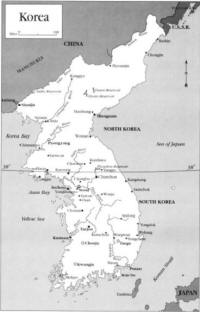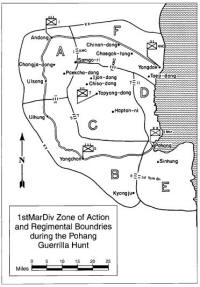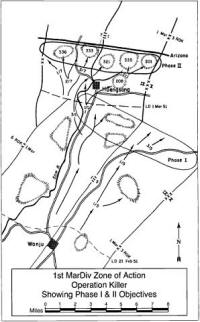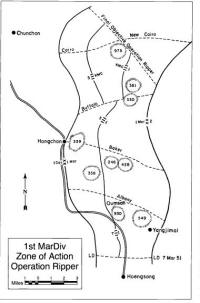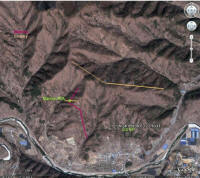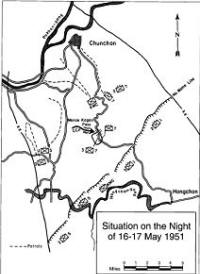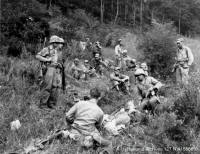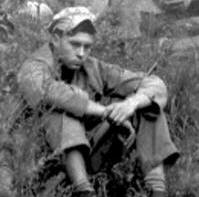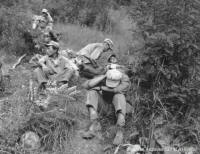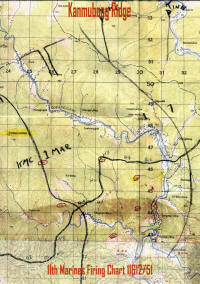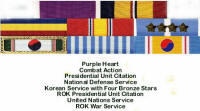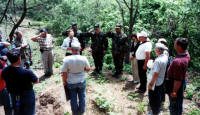|
We need your help to keep the KWE online. This website
runs on outdated technology. We need to migrate this website to a modern
platform, which also will be easier to navigate and maintain. If you value this resource and want to honor our veterans by keeping their stories online
in the future, please donate now.
For more information, click here.
|
|||||||||||||||||||||||||||||||||||||||||||||||||||||||||||||||||||||||||||||||||||||||||||||||||||||||||||||||||||||||||||||||||||||||||||||||||||||||||||||||||||||||||||||||||||||||||||||||||||||||||||||||||||||||||||||||||||||||||||||||||||||||||||||||||||||||||||||||||||||||||||||||||||||||||||||||||||||||||||||||||||||||||||||||||||||||||||||||||||||||||||||||||||||||||||||||||||||||||||||||||||||||||||||||||||||||||||||||||||||||||||||||||||||||||||||||||||||||||||||||||||||||||||||||||||||||||||||||||||||||||||||||||||||||||||||||||||||||||||||||||||||||||||||||||||||||||||||||||||||||||||||||||||||||||||||||||||||||||||||||||||||||||||||||||||||||||||||||||||||||||||||||||||||||||||||||||||||||||||||||||||||||||||||||||||||||||||||||||||||||||||||||||||||||||||||||||||||||||||||||||||||||||||||||||||||||||||||||||||||||||||||||||||||||||||||||||||||||||||||||||||||||||||||||||||||||||||||||||||||||||||||||||||||||||||||||||||||||||||||||||||||||||||||||||||||||||||||||||||||||
 |
|||||||||||||||||||||||||||||||||||||||||||||||||||||||||||||||||||||||||||||||||||||||||||||||||||||||||||||||||||||||||||||||||||||||||||||||||||||||||||||||||||||||||||||||||||||||||||||||||||||||||||||||||||||||||||||||||||||||||||||||||||||||||||||||||||||||||||||||||||||||||||||||||||||||||||||||||||||||||||||||||||||||||||||||||||||||||||||||||||||||||||||||||||||||||||||||||||||||||||||||||||||||||||||||||||||||||||||||||||||||||||||||||||||||||||||||||||||||||||||||||||||||||||||||||||||||||||||||||||||||||||||||||||||||||||||||||||||||||||||||||||||||||||||||||||||||||||||||||||||||||||||||||||||||||||||||||||||||||||||||||||||||||||||||||||||||||||||||||||||||||||||||||||||||||||||||||||||||||||||||||||||||||||||||||||||||||||||||||||||||||||||||||||||||||||||||||||||||||||||||||||||||||||||||||||||||||||||||||||||||||||||||||||||||||||||||||||||||||||||||||||||||||||||||||||||||||||||||||||||||||||||||||||||||||||||||||||||||||||||||||||||||||||||||||||||||||||||||||||||||
| Back to "Memoirs" Index page | |||||||||||||||||||||||||||||||||||||||||||||||||||||||||||||||||||||||||||||||||||||||||||||||||||||||||||||||||||||||||||||||||||||||||||||||||||||||||||||||||||||||||||||||||||||||||||||||||||||||||||||||||||||||||||||||||||||||||||||||||||||||||||||||||||||||||||||||||||||||||||||||||||||||||||||||||||||||||||||||||||||||||||||||||||||||||||||||||||||||||||||||||||||||||||||||||||||||||||||||||||||||||||||||||||||||||||||||||||||||||||||||||||||||||||||||||||||||||||||||||||||||||||||||||||||||||||||||||||||||||||||||||||||||||||||||||||||||||||||||||||||||||||||||||||||||||||||||||||||||||||||||||||||||||||||||||||||||||||||||||||||||||||||||||||||||||||||||||||||||||||||||||||||||||||||||||||||||||||||||||||||||||||||||||||||||||||||||||||||||||||||||||||||||||||||||||||||||||||||||||||||||||||||||||||||||||||||||||||||||||||||||||||||||||||||||||||||||||||||||||||||||||||||||||||||||||||||||||||||||||||||||||||||||||||||||||||||||||||||||||||||||||||||||||||||||||||||||||||||||
|
|
Perry J. DickeyBartlesville, OK - "I wanted to go to Korea and serve in a line company. This desire was not based upon grand heroic visions. World War II ended two days after my sixteenth birthday and I felt deprived of being able to serve in that war. My real interest was to determine if I had whatever it took to be a combat Marine." - Perry J. Dickey
|
||||||||||||||||||||||||||||||||||||||||||||||||||||||||||||||||||||||||||||||||||||||||||||||||||||||||||||||||||||||||||||||||||||||||||||||||||||||||||||||||||||||||||||||||||||||||||||||||||||||||||||||||||||||||||||||||||||||||||||||||||||||||||||||||||||||||||||||||||||||||||||||||||||||||||||||||||||||||||||||||||||||||||||||||||||||||||||||||||||||||||||||||||||||||||||||||||||||||||||||||||||||||||||||||||||||||||||||||||||||||||||||||||||||||||||||||||||||||||||||||||||||||||||||||||||||||||||||||||||||||||||||||||||||||||||||||||||||||||||||||||||||||||||||||||||||||||||||||||||||||||||||||||||||||||||||||||||||||||||||||||||||||||||||||||||||||||||||||||||||||||||||||||||||||||||||||||||||||||||||||||||||||||||||||||||||||||||||||||||||||||||||||||||||||||||||||||||||||||||||||||||||||||||||||||||||||||||||||||||||||||||||||||||||||||||||||||||||||||||||||||||||||||||||||||||||||||||||||||||||||||||||||||||||||||||||||||||||||||||||||||||||||||||||||||||||||||||||||||||||
Memoir Contents:
My Dog History
Marine Reserve Aviation SquadronLate in November or early in December of 1950, the Third Replacement Draft for the First Marine Division in Korea departed San Diego, California, onboard the troop ship USS General E. T. Collins. I was one of the Marines in that draft. First, I should state how I came to be in the Third Replacement Draft. It started in February 1948 when I enlisted for two years in a Marine Reserve aviation squadron. This was a great experience as we worked on the Corsairs and were able to fly as passengers in various military aircraft and receive flight pay for the privilege. I reenlisted for another two years and in the spring of 1950 a new Marine Reserve artillery unit was organized and I transferred into the new unit, primarily to learn and have new experiences. There were only a few weekend training sessions before the outbreak of the Korean War and the unit was activated in July 1950 and sent to Camp Pendleton, California. Earlier I had signed up for four years with the Regular Marines, passed the physical and had a few days before being sworn in when the Reserve unit was activated. I elected to go with the remaining two-year reserve commitment rather than four years in the Regular Marine Corps. When we arrived at Camp Pendleton, others were promptly assigned to various units and duties, but I was not. I was a Corporal that had not been to Boot Camp. Privates and PFCs were sent to Boot Camp, but Corporals were not. My offer of a reduction in rank was declined. I reported to a Gunnery Sergeant that was in charge of the S-2 or Intelligence Section. It was obvious that I was not being assigned due to indecision of higher authority. I pressed the Gunny for an assignment and his reply was that he was saving me for the BIG WAR that he anticipated with Russia. One day two 1st Lieutenants requested that I take a walk with them along the road. As we walked, they asked about my view of going to a prep school and if I did well I would receive an appointment to the US Naval Academy at Annapolis, Maryland. The discussion ended when I replied that the opportunity should be given to another Marine that intended to be a career Marine and that I wanted to go to Korea and serve in a line company. This desire was not based upon grand heroic visions. World War II ended two days after my sixteenth birthday and I felt deprived of being able to serve in that war. My real interest was to determine if I had whatever it took to be a combat Marine. Thus I was back in limbo when an order was posted that any Marine could volunteer for immediate transfer to combat training. I was the first one to step forward and I was promptly on the way to tent camp, combat training and Korea. Soon I would have some good reasons to question the wisdom of my decisions. Trip to KoreaThe voyage from San Diego to Kobe, Japan, took about three weeks. There was little to do aboard a crowded troop ship, except there was ample time to contemplate the future. During this time, I gave more thought to the fact that Marines in line companies are directly engaged with the enemy and that many are killed. The ship operated under wartime orders and was blacked out at night. Radio reports of battles and intelligence were posted each day and the reports were quite grim. The Chinese had massed on the border and had entered into Korea with overwhelming force. These reports contributed to my developing fatalistic view that I could not control events and that I would probably be killed in Korea. Initially the ship was bound for Japan where it would be unloaded and then the winter gear and other equipment would be issued to individual Marines. We went on board with combat packs and rifles, but we were not equipped for the extreme cold weather of Korea. The First Marine Division urgently needed replacements and there was a great effort to find a way for us to be landed in Korea and sent to aid the beleaguered Marines at the Chosin Reservoir. This could not be done as the ship was not combat loaded to issue needed equipment to individual Marines before leaving the ship. Thus, we went on to Kobe, Japan, where the ship was unloaded, equipment issued, and then we boarded another ship bound for Pusan, Korea. After arriving at Pusan, we traveled by train, with all of the windows shot out, to Masan, Korea, where we joined what was left of the First Marine Division at the Bean Patch. Guerrilla HuntIt was dusk when we arrived at Masan. I was assigned to Dog Company, Second Battalion, Seventh Marine Regiment, First Marine Division where I served as a fire team leader, squad leader and Company or intelligence scout from December 17, 1950 through November 27, 1951. We were loaded onto six-by trucks to be transported to the Bean Patch. Each Marine had his back pack and rifle and the trucks were fully loaded. I was on the outer edge of the truck bed with my pack hanging over the side. There was room in the truck bed for all of our feet, but our packs caused the top to balloon out over the side of the truck. My body with the pack extended beyond the truck bed and I was unable to retain any balance. The only thing that kept me from falling was some unknown Marine that grabbed my pack strap and held me in the truck. This was further complicated by the truck being driven over a rough and rutted roadway at high speed. I had some unkind words for the truck driver and the Marine Corps as I believed that my death in Korea should at least be due to enemy action.
Marines listed on the roster included wounded and sick Marines that were not present but were expected to return as fit for duty. The sick classification included Marines that had a serious illness or non-combat injury requiring hospitalization. Less serious illness and injuries were treated by U.S. Navy Corpsmen that were attached to the unit. On December 17, 1950, I arrived with the 3rd replacement draft and joined the men remaining in Dog Company who were fit for duty. At that time, there were only a few Marines listed on the roster, as the Company was regrouping after the battle at Chosin reservoir and only seven men were fit for duty. It was reported that there were eight survivors, but one of them had severe frost bite on both feet and was evacuated for treatment. A Marine line company usually has 180 to 240 men and the few men remaining in Dog Company reinforced my view that I probably would not survive. Thus, I established a goal or objective that I hoped was within my control. That was to be a good Marine and to die with honor if that was to be my fate. A tent camp was established at Masan and was known as the “Bean Patch.” In the beginning all of the enlisted Marines of Dog Company were assigned to one large rectangular tent. The ground was mud but there was straw on the ground inside of the tent where we had our sleeping bags. Our ranks increased as Marines returned from hospitals, along with more tents that were smaller pyramid type squad tents.
Christmas was celebrated at the “Bean Patch” with a turkey dinner that I did not enjoy and do not remember as I was ill with a bad case of flu. I continued with daily training exercises and did not seek medical attention as I had no intention of complaining of illness in the midst of returning Marines that had been wounded in action. At the end of December 1950 the Dog Company roster increased due to Marines returning from hospitals as follows:
More Marines were added to the Dog Company ranks from the 4th Replacement draft that arrived on January 12, 1951, and the company was considered as combat ready. Awarded Korean Campaign Battle Star-Communist China Aggression, November 3, 1950-January 24, 1951 From January 17, 1951 through February 20, 1951, Dog Company participated in the Great Pohang Guerrilla Hunt. The 1st Marine Division routed guerrilla forces in the Masan-Pohang area. Operations continued around Masan into February. The last major engagement was fought at Uisong. The North Korean 10th Division was reduced in strength by 60%.
Following is a part of a letter written on January 24, 1951, by Sgt. Robert V. Damon (killed in action on April 10, 1951) from Pohang, Korea:
Conditions and activity during this period are illustrated by part of another letter written on February 1, 1951 by Sergeant Damon:
At this time, we were engaged against guerrilla forces with a few small fire fights and only one casualty. My fear was great when first ordered to man a listening post for a two-hour watch during the night, as moving in and out of Marine lines in the dark was hazardous with or without activity by the enemy. This first occasion was aborted as we moved out during the night before I was scheduled to man the post. Later on I would often man listening posts with my fire team, but we always went out before dark and returned after dawn, which eliminated the potential hazard of a fruitless death by friendly fire. Our routine was to establish our position, dig in, zero in the 60mm mortars, rig hand grenades with communication wire, and proceed to wait, watch and listen. The main memorable event for me during the Guerrilla Hunt period was my fire team was ordered to locate the enemy during the night, snatch prisoners, and return with the prisoners alive for interrogation. My fire team members were PFC Anthony Fernandez, PFC Gus Felt and PFC Bill Fish. Also present were Sergeant Mullen and a Korean interpreter. We went out on a bright moonlit night, moving through rice paddies, and waited in a rice paddy along a road. Soon we sighted a man coming from the direction of the enemy and I went forward to a point of cover at the road and captured the man when he came within reach. He had a Thompson machine gun, but did not offer much resistance. I took the prisoner about thirty yards to the position of my fire team and then there was more activity on the road. After a short time we determined Marines from the First Marine Regiment were on a combat patrol and we identified ourselves. At this time a major fire fight erupted, as the prisoner was a scout leading a Korean force that deployed when we captured him. My fire team was in the middle of a fire fight with two major forces, but we managed to return to the Dog Company Command Post with the prisoner. We were exhausted from climbing hills and 50% watches at the end of the Guerrilla Hunt, but there was slight enemy activity. PFC Robert Ehrenfried was the only casualty wounded in action on January 31, 1951 and not included in the following roster:
This activity was reported by a letter written at Pohang, Korea on February 15, 1951 by Sergeant Damon.
Awarded Korean Campaign Battle Star for First UN Counteroffensive, January 25-April 21, 1951. Operation KillerOn February 17, 1951, the 5th Replacement Draft arrived. From February 15, 1951 to March 12, 1951, Dog Company was engaged in Operation Killer in the Wonju area of Central Korea. Operation Killer was intended to drive the CCF north of the Han River. Five U.S. Divisions participated (1st Cavalry, 1st Marine Division, 2nd, 7th, 24th). U.S. casualties were 144 KIA and 921 WIA. We marched north to participate in Operation Killer in cold and heavy rain, arriving at a river that we needed to cross as darkness fell. The crossing was delayed until the following morning. There were several Korean houses that were not occupied and most of the Marines elected to take shelter in these houses for the night. I observed a grove of fir or pine trees nearby and I proceeded to prepare my own shelter for the night. I cut branches from the trees and piled them about three feet deep and three by six feet in area. This permitted me to be relatively dry and warm as I slept on top of the branches under the cover of my shelter half. The following morning we approached the river crossing and found the river in flood stage with a roaring current. There were amphibious trucks (DUKS) available to ferry us across the river. However, the DUKS were of no use as they were unable to navigate against the force of the current. No problem. We abandoned the DUKS and waded across the river, dodging large rocks that were being swept downstream. I believe that the river was successfully crossed without casualties except for the DUKS. The weather at this time was bad, with rain in low areas and snow at higher elevations, along with wind. It was difficult to climb the steep and rocky ridges that were covered with snow and ice. The valleys were muddy with melting snow that blocked transport of needed supplies. Most supplies of ammo and rations were dropped from aircraft.
On 3/1/51 Dog Company moved north and attacked Hill 536 as part of Phase II Operation Killer. Casualties from March 1 through March 6 were as follows:
Massacre ValleyIn the early part of March, we were the first U.S. forces to reenter an area known as Massacre Valley. U.S. Army infantry and artillery units had been overrun about three weeks earlier leaving artillery pieces, burned out trucks and about 700 bodies of U.S. Army soldiers lying as they had fallen. We passed through another area where U.S. Army troops had been massacred during May of 1951. These two events are merged in my memory; however, I remember passing through a valley with burnt U.S. Army vehicles, some of them still occupied with the bodies of U.S. Army soldiers. There was one six-by truck with about six bodies. One body was on the bench seat inside the truck in a natural seated position, but the body was reduced to charcoal. It was a warm day but there was no odor of decay or any other indication of the passage of time. There was nothing for us to do so we moved out and did not linger to inspect bodies or equipment. There is a factual report titled "Massacre at Hoengsong" by Gary Turbak and published in the February 2001 issue of the VFW magazine. It reported that the Communist forces launched a major offensive on February 11, 1951, resulting in the slaughter of 726 U.S. Army KIA. The 7th Marines re-entered the area north of Hoengsong on March 7, 1951 for the first time since the rout, finding the battle scene eerily preserved. As spring approached we moved north with aggressive offensive action. It was a continuous process of taking hills, establishing a perimeter, patrolling and then moving on to another hill. Activity now became more intense with more extensive fire fights and mortar and artillery fire during the day and night, along with more casualties. We were deprived of adequate sleep and dozed at opportune moments. Also, unnecessary talking after dark was unwise as it could disclose our position. When moving out we maintained a ten-yard interval, which was not conductive to conversations. Marines in Korea were equipped with M-26 Pershing tanks. These tanks were armed with a 90mm gun, two .30 caliber machine guns, and one .50 caliber machine gun. At one time we did a lot of patrolling with tanks. The only good thing about this duty was the tank engines produced a lot of heat that was appreciated during cold weather. Part of the time we rode on the tanks and enjoyed the ride and warmth. When the tanks were engaged, we were deployed around them in defensive positions, as the infantry was responsible for protecting the tanks that were intended to inflict damage to the enemy. Tanks drew enemy fire and the tank afforded some protection to the tank crew, but there was nothing to provide cover for the infantry. The 90mm gun on the tanks was very effective, extremely loud, and produced a shock wave that could be felt for quite a distance. I have read that the muzzle blast from the 90mm guns can knock a man down at a distance of 30 feet. On one occasion, I was at the side of a tank that was stationed about ten feet from the side of one of the few buildings that remained standing. This was a taller building and had windows on the upper level. I was between the tank and the building and was caught in between with the shock wave reflecting from the building. Almost instantaneously, there was a shower of broken glass around me from the upper level windows. Air strikes were always welcome and spectacular. This may reflect my prejudice and be overstated; however, I believe Air Force pilots remained at high altitudes, Navy pilots were better and Marine pilots were the best and great as they trimmed the tree tops in providing close ground support. One outstanding air strike occurred on 6 March 1951. PFC Fish was wounded that morning when a spent bullet penetrated his foot, leaving the bullet between his toes. Later that day we were pursuing the enemy in a ravine or small valley. The enemy was in a fortified position at the foot of a bluff with an overhanging rock ledge. We had advanced and were close (30-40 yards) to the fortification prior to the air strike. The air strike started with a few low-level strafing passes which were not effective. The Corsairs were low and close enough for us to believe we had eye contact with the pilots and feel the rushing air and prop wash as they went by. We made hand signals to the pilots, pointing to the fortification under the bluff. The pilots responded either to our signals or more probable to directions of the ground control officer. The Corsairs then came in treetop low at an angle, causing napalm and white phosphorous to penetrate the fortification under the bluff. White phosphorous plummeted about us and we felt enormous heat from the burning napalm reflecting off of the rock overhang. We gave thumbs up to the pilots as they roared by, and they responded. Operations Ripper & DauntlessFrom March 4, 1951 to April 4, 1951, Dog Company participated in Operation Ripper. The objective was to drive the Communists back to the 38th Parallel and retake Seoul. Seven U.S. divisions participated (1st Cavalry, 1st Marine, 2nd, 3rd, 7th, 24th, 25th). U.S. casualties were 566 killed in action and 3220 wounded in action. Below is a map showing the location of the 1st Marine Division during operation Ripper. On March 7, 1951, Dog Company attacked "Oumsan", one of the highest mountains in South Korea. On that and the immediately following days, our casualties were:
Following is a copy of a letter written by Sgt. Robert V. Damon from Hoengchon, Korea:
Operations during April 1951From April 1 through April 17, 1951, Dog Company was included in orders to attack, seize and reinforce the Kansas Line southwest of Hwachon Reservoir. On April 2, 1951, PFC Charles Strunk was wounded in action. Two days later, on April 4, 1951, Operation Dauntless began and Dog Company was ordered to cross the 38th parallel. Dog Company led the attack on April 5, the same day the 7th Replacement Draft arrived.
Below is an Arial photograph & map of the area that I have marked to show where Sgt. Robert V. Damon was KIA on 4/10/51. Death of Sergeant DamonOn April 10, 1950 Dog Company was on what I believed to be a combat patrol to locate and engage the enemy and to establish a major point of resistance rather than a rear guard action to delay our advance. We had made contact and were receiving small arm and machine gun fire from our right. Rounds were cracking in all directions and one round ricocheted off a small tree branch in front of my head, showering my face and eyes with bark and debris. It then struck the man to my right, PFC Jose Flores, in the face. At that time Sgt. Robert Damon came to my left and tapped me on the shoulder, indicating for me to follow him. Sergeant Damon and I started moving to our left and up the hill toward the enemy. We progressed forward about a hundred or more yards and I think out of sight of other company members. I was several yards behind Sergeant Damon when he shouted, "Shoot em!!" Sergeant Damon had an .03 Springfield sniper rifle with a scope mounted over the receiver. The rifle could hold six rounds, but each round had to be loaded separately into the magazine and he wanted to withhold firing his rifle. Sergeant Damon had spotted a rifle barrel in the bushes about two yards in front of him and yelled, “Shoot em!” I also saw the rifle, and fired into the bush. At this time another enemy with his rifle aimed at me appeared about ten feet in front of me, but slightly to the right side. I fired at him, but my M-1 rifle went "click" and did not fire. Instantly I started dropping to the ground and used my left hand to slide the bolt back to clear and load another round into my rifle. I fired again with the rifle at my hip and in a crouched position. I was fortunate to hit the enemy with a shot between his eyes that blew out the top of his head. Now hand grenades started to fall and explode all around me. I made a dive for cover as there was a tree uphill and a small rock protruding from the ground. When I hit the ground, I saw three hand grenades tied together and just beyond my reach a few feet uphill and to the right side of my head. I turned my head away from the grenades as they exploded. I was surprised at being alive after the grenades exploded. I looked to my left and saw Sergeant Damon standing on top of a bunker, firing a .38 revolver into the entrance. He fired several rounds and then I think there was more than one shot, possibly a volley, from the bunker. Sergeant Damon was fatally shot in the chest at a range of a few feet. The revolver rotated on his trigger finger and dropped into the bunker. He staggered a step or two toward me and fell face down with his head downhill. There was a tree stump about a foot high and Sergeant Damon fell with his chest on the stump, an arm on each side and with his head drooping, but not touching, the ground. He uttered a small gasp, a large volume of blood gushed from his mouth, and he was dead. Sergeant Damon’s body was about six feet from me and between me and the bunker entrance, which was about ten feet away. I was in a blind spot for the bunker and not within the line of fire. The enemy apparently let Sergeant Damon and me progress without firing to avoid giving away their position. I had two hand grenades. I missed with the first grenade by throwing it over and past the bunker entrance. The second grenade went right into the entrance, but was promptly thrown back at me and exploded downhill. My position was known to the enemy within the bunker, but they were afraid to stand up and fire at me. They did hold a rifle up on the outside of the entrance and fire blindly in my direction. I returned fire, attempting to hit the exposed hands and arms. The malfunction of my rifle now became a benefit, as it did not eject the clip after firing the last round and I was able to quietly reload. I did not intend to storm the bunker with my single fire rifle, but I held the enemy off and contemplated possible action. My concern was that the company was on a combat patrol and probably would withdraw after establishing the main line of resistance. I thought Sergeant Damon and I might not be missed until after the company had withdrawn. Sergeant Damon and I had gone forward in the heat of combat without notice to others. I was determined not to be taken prisoner, and I believed the best course of action was to hold out until dark and try to return to the company position. After an unknown period of time, I looked downhill and saw a face staring up at me. It was Pvt. Raymond McCallum, who was a replacement that joined our unit a few days earlier. McCallum had been concerned about his conduct when first exposed to combat and I had advised him to follow me, do what he had been trained to do, and that he would be okay. McCallum complied with that advice and now was in the line of fire of the bunker about fifty yards downhill. I motioned for him to withdraw and return with help. He understood and disappeared. Some time later PFC Gus Felt came inching up from below and to my right. Gus had grenades and was better than I in using them. Gus pulled the pin, let the spoon fly, held the grenade with a grin as I squirmed, and then threw the grenade--which went into the bunker entrance and exploded immediately. Gus and I continued up the hill where we encountered more enemy who were in disarray. Gus and I proceeded to fire at will upon the enemy who were about one hundred yards away and not returning fire. It was more like target practice than combat. Gradually other men arrived and after some time we withdrew and started down the hill. Sergeant Damon’s body was removed before I returned to the location. I did help another wounded Marine from our platoon down the hill. He was a squad leader and I do not remember his name. His left leg was injured and he was unable to walk. After getting him down the hill, I kept his rifle and destroyed my defective one. At that time I became the squad leader to replace Sergeant Damon, who was posthumously awarded with a Silver Star and Purple Heart. As noted above, Gus demonstrated the wisdom of holding a grenade and timing it to detonate upon arrival at the target. I never threw another grenade by simply pulling the pin and throwing the grenade. The procedure is to pull the pin, let the spoon fly, hold the grenade for the appropriate time and then throw the grenade, thus avoiding undesirable returns. The Ridge That Drank BloodBelow is a copy of a magazine article based upon the action on April 10, 1951, that was written by Jim McGivern, as told to Dewey Linze, and published in the December 1952 (Volume 1, No. 9) issue of Men magazine that is no longer in publication. The publisher of the magazine was Martin Goodman; editor, Noah Sarlat; associate editors K.T. Meyer, V.A. Jirsa, and N.R. Sachs; and art director Mel Blum. Men magazine was published monthly by Zenith Publishing Corporation, whose offices were at 270 Park Avenue in New York City. The "Ridge that Drank Blood" was a "fictionalized" article about a true event of the Korean War in which Dog Company Marines participated. It read as follows:
Although the preceding article was a fictionalized report of Dog Company activity on April 10, 1951, the names of the real Marines referred to in the article were listed on the roster of Dog Company as shown below:
Awarded Korean Campaign Battle Star for Communist China Spring Offensive, April 23-July 8, 1951. On April 23, 1951, PFC Vernon E. Firnstahl and PFC Robert F. Vetter were wounded in action. On April 25, 1951, PFC Jesus J. Guerra was WIA. The following day, on April 26, the 1st Marine Division was ordered to withdraw and fall back to a section of No Name Line at a location near Hongchon. No Name RidgeI knew more about Sergeant Damon and others who joined the company during December 1950 as we had an inactive period in reserve while the company was rebuilding. Replacements were added after we were engaged and there was a lot of turnover. Men came and went and we never really knew much about anyone. During the best of times we were on fifty percent watch when we were dug in. Two Marines dug in together and "fifty percent watch" meant that one was always awake. There was no allotted time for a watch, as each Marine remained awake and on watch as long as possible and then nudged his partner to take over the watch. The elapsed time for each watch may have been a few minutes or several hours. When it was dark and quiet on watch, there was time to think and I had three reoccurring fantasies that were beyond my expectations. One was a china plate in bright sunlight with one egg sunny side up. The second was an ordinary one-inch pipe sticking up out of the ground with a tap that could be opened to provide water whenever desired. The third was a pretty young lady, standing in an open doorway, and waiting just for me. On one occasion, I received an assignment to man an outpost that I believed to be more exposed and vulnerable. At that time I was the squad leader and I assembled the squad and requested three volunteers to man the post with me. This was a stupid act, as no one volunteered; thus, I turned and proceeded toward the position. It was a great relief when I looked back and saw that PFC Anthony Fernandez, PFC George Golubosky and PFC Gus Felt were quietly moving out with me. This is an example of inexperience and failed leadership as I attempted to avoid selecting and ordering the men needed to do the job. We ate cold (no fires) C-rations except when we were in reserve. Rations were distributed along with ammunition each day. Each Marine opened the ration carton, took what he wanted, and discarded the rest. Rations were consumed on an individual basis whenever possible or desired, much the same as drinking water from his canteen. At appropriate times, it was possible to quickly heat a small amount of water for coffee or hot chocolate. I usually had a small amount (less than 1/8th pound) of plastic explosive. This material was used by rolling a ball about the size of a marble and placing it under a C-ration can filled with water. I used a match to light the plastic explosive and watched it quickly flash and burn with no smoke. Some hand grenades could also be used to heat water by unscrewing the detonator and removing the explosive. However, some of the grenades had a yellow cake explosive that burned slow with black malodorous smoke. One time when we were in reserve for a few days, we were treated to a hot meal of steak, eggs, milk and two bottles of beer. I enjoyed beer, but not as much as others--especially when the beer was hot. So I drank one beer and gave the other one to PFC Anthony Fernandez. This was more than fair as Tony did not smoke and kept me supplied with his cigarettes. Tony was the BAR man in my fire team and usually was near my side or behind me. It was Tony that told me about Italian Pizza Pie that he described as a hot and tasty meat pie. Tony assured me that I would like a pizza, but I was not convinced and it would be a long time before I discovered that Tony was correct. Tony is no longer alive and the last time that I saw him, we were stationed at Camp LeJeune in NC. In Korea, Tony had previously mentioned his fiancée and I asked how she was doing. Tony lived in Minnesota and it was cold during the winter when he returned home and went to see his girl. Tony intended to surprise her and went to her home without calling. As he arrived, she was leaving with a girl friend. When Tony embraced his girl and held her gloved hand, he noticed that his fiancée was not wearing his ring. Tony said nothing, but his girl went back into her house for a moment and returned wearing the ring for the last time as Tony’s fiancée.
Casualties resulted from weather as well as combat. Late in the spring we were ordered to drop our packs and form a skirmish line. We went up the sunny side of a hill that was dry and clear to the ridge. We continued down the shady side that was covered with wet snow about knee deep, causing us to be quite wet when we reached the bottom. The sun was setting as we started to assault the next hill. We continued the assault and secured the hill about midnight. Staying warm was not a problem while we were active, but we cooled rapidly after digging in and waiting for a counter assault. We were cut off without access to the rear for our packs and supplies. The night was cold--below freezing, but above zero. Supporting artillery fire maintained our perimeter during the remainder of the night as we huddled together to maintain body temperature. I was fortunate to spend the night sitting with two other men, PFC Fernandez and PFC Golubosky, rotating the warmest middle position. Others were not as fortunate. Many men were not fit for duty the following morning and never returned. On April 7, 1951, the 8th Replacement Draft arrived. As the weather grew warmer in the spring, Tony and I decided to dispose of our sleeping bags that were dirty and smelly. We buried the bags in a hole. Soon we discovered that we were unwise, as nights were still cold. Tony and I approached a new replacement that arrived with a full pack and two blankets. We were standing on each side of the replacement and asked for one of his blankets. The replacement was fresh out of boot camp where he learned that Marines are responsible for their equipment and are never to be caught short. With great reluctance, the replacement surrendered a blanket that we cut so that Tony and I each had one half of the blanket. The replacement soon learned that everything is expendable in combat. Operation MousetrapThe CCF Second Spring Offensive took place from May 17 through 22, 1951. Four U.S. Divisions (1st Marine, 2nd, 3rd and 25th) participated. There were 333 killed in action and 888 wounded in action. Operation Mousetrap began on May 16, 1951. This operation is covered in U.S. Marines in the Korean War at pages 393-394. The Morae Kagae Pass was located about midway on the road between Chunchon at the north and Hongchon at the south. No Name Line was the front line for UN forces and it was located midway between the pass and Hongchon. The 7th Marines were ordered to defend the pass, keep the road open, and be prepared to fight their way out and back to the main line if the Chinese attacked in force. The purpose was to guard the Morae Kagae Pass and to trap advancing Chinese forces. Korean Marines were located on the west side of the road about halfway between Chunchon and the Pass. 1st and 2nd Battalions of 7th Marines were located on the east side of the road. 3rd Battalion, 7th Marines were located on the west side of the road and on the south side of the Pass. There was an intense battle for several hours as the Chinese forces were trapped. This was a successful operation with Chinese losses estimated to be 530 men, along with equipment. Marine losses were seven KIA and 19 WIA. The 7th Marines were withdrawn and returned to No Name Line. There are photographs of the aftermath that have been widely distributed showing the enemy lying as they fell in battle, as well as photographs of the mass burial. My memory of Operation Mousetrap is limited to a few outstanding events. I do not recall where we were dug in during the night as related to the location of the main battle. Also, I do not recall any significant activity at our location; however, there may have been some activity that was more or less routine with mortar, artillery and sporadic small arms fire. I do remember a bright and sunny morning when we left our position and advanced to the location of the main battle. It was obvious there had been a major fight, as there were many Chinese bodies along the way. The number of bodies increased as we advanced to the area that was the center of the activity. There were hundreds of bodies, some lying as they had fallen and others stacked awaiting burial. A Marine bulldozer was excavating a large trench for a mass burial. The dead Chinese were being carried and placed into the trench as the bulldozer continued to work increasing the size of the trench. I believe that Marines were handling the dead Chinese, with one Marine at the head and another Marine at the feet. Each dead Chinese was carried by two Marines and placed, not dragged, into the trench. I do not believe that Dog Company Marines were used for this burial detail.
I also remember that my squad was standing by waiting for orders to move out. The ground under my feet felt spongy and I used the toe of my foot to push and move some of the dirt. Much to my surprise, I found that I was standing on the forehead of a dead Chinese that had been buried in a very shallow grave. Apparently this dead Chinese had been buried during the battle. We continued taking hill after hill, tank patrols, combat patrols and recognizance patrols. After taking a hill we dug in, secured the perimeter, carried dead and wounded down the hill, and returned with ammunition, C-rations and water. I acted more as a robot responding to commands, acting with instinct, without thought and void of emotion with the exception of dead Marines. I did not hate the enemy, abuse prisoners or enemy bodies. I was indifferent and unconcerned about the fate of anyone other than Marines. Our tongues were thick from dehydration as we had inadequate water for drinking and even less for hygiene. Often when we had water, it was frozen and unusable as we seldom had the luxury of a fire. During the entire time I was in Korea, I can remember only one shower. A tent was set up with hot water and we each had a few minutes for a shower. Occasionally when we were in a secure area with warm weather and we came upon a river, we would go into the river with our clothes on, wash or rinse the clothes, and then leave the clothes to dry on the river bank while we continued to wash and swim. Usually we moved out before the clothes were dry. We carried only what we needed and discarded all surplus items. We started in the winter with cold weather gear and clothing. Items were left behind when damaged or as the weather became warmer. A lot of gear was left behind and later needed such as parkas, gloves, blankets and sleeping bags. But even when we had gloves, our hands were cold and rigid until warmed by warmer weather. I traveled light and my pack held a sleeping bag or part of a blanket, a shelter half, sometimes a poncho, an entrenching tool, some C-rations, and usually three bandoliers of ammo and three hand grenades. This was in addition to the ammo in my belt and grenades in my pockets. The shelter half was only used as a tent when we were in reserve. At other times, the shelter half was used for a ground cover or improvised shelter from rain or snow. Operation DetonateOperation Detonate was conducted from May 20, 1951 through June 8, 1951 with the objective to retake the Kansas Line. Seven U.S. Divisions participated (1st Cavalry, 1st Marines, 2nd, 3rd, 7th, 24th, 25th). There were 530 killed in action and 3195 wounded in action. Dog Company jumped off in the attack drive back north on May 23, 1951. Its first casualty was the next day. The casualties from May 24 through the end of the month were as follows:
Operations during June 1951During June and July 1951 Dog Company continue to march north, advancing into the Punchbowl area of eastern North Korea. Casualties continued to mount, before and after the 9th Replacement Draft arrived on June 6, 1951.
The 1st Marine Division encountered heavy North Korean People's Army (NKPA) resistance during the Battle for the Punchbowl June 10-16, 1951. There were 67 Marines KIA and 1044 WIA. Dog Company had the following casualties from June 10 through June 30, 1951:
Awarded Korean Campaign Battle Star for UN Summer Fall Offensive, July 9-November 27, 1951. More Replacement Drafts ArriveOn July 9, 1951, the 10th Replacement Draft arrived. Six days later, on July 15, the entire 1st Marine Division was relieved and placed in reserve. We were relieved and went into reserve by descending from the hills, marching single file at a ten-yard interval. As we proceeded to the rear, we passed through an area occupied by an army artillery unit. There was no doubt that we were dirty, bedraggled, smelly and generally raggedy-assed Marines, having been on line for a period of five months. Our path took us about ten yards along the side of the clean, fresh faces of army troops lined up waiting in line for hot chow. Naturally, the army guys started to harass us with hoots and derogatory comments. I was at the front of our column and in no mood to accept abuse by rear echelon army troops. Swiftly, I swung the rifle from my shoulder, smacked the fore stock with my left palm and a resounding crack. I then opened the bolt ejecting the loaded round and let the bolt slide home with a new round. There is something about a bolt sliding home that even rear echelon army troops recognize. Suddenly all was quiet and we passed without further comment. I did not intend to shoot anyone, but I would have fired a warning shot over their heads if the abuse had continued.
We were continuously engaged as winter turned into spring, summer and fall, with some brief periods in reserve. Sometime during June 1951, I left the platoon and was assigned to duty as company intelligence scout. When we were on line, my duties as Company Scout were to serve with Dog Company as directed by the Company Commander. Usually I was directed to serve with a squad, platoon or with the Company Executive Officer. Assaults or patrols were started each day with different platoons or, in some cases, a squad. However, I was always present as the company scout. Each day we patrolled and probed for the enemy, making contact and taking prisoners. Generally it was my job to take charge and assure appropriate handling of prisoners and to conduct a prompt preliminary interrogation to determine rank and unit and to identify and locate any other potential prisoners. My practice was to warn prisoners not to lead me into an ambush and then to follow them to search for additional enemy troops hiding nearby. During the time we were in reserve, I reported directly to the Battalion Intelligence Officer (S-2) and performed various duties. On one occasion, I was part of a demolition team to locate and detonate artillery and aerial bomb duds. On another occasion, there was to be a nighttime demonstration of defensive fields of fire. My job was to scout the hill selected to be defended and to establish the defensive positions. That night Marines were moved into the positions and all weapons were firing live tracer ammunition. It was a spectacular sight. Following is an article that was published in the Idaho State Journal on Tuesday, July 24, 1951: Pocatello Marine Evades Mine Field
I have no memory of this event. However, C.L. (Barry) Barrett did recall and reported that after being on line for some time, the 7th Marines were placed in reserve. We had moved through an area that was later marked off as a mine field. Because we had passed through the area on the way north, our platoon leader, Lt. Brendan O’Donnell, ordered Barry to take the second squad and another platoon out of the area. Barry reported, our luck held and we returned to the rear without mishap. At this time I was the Company Scout and the routine was for me to be assigned to participate with any squad or platoon that was patrolling or had an assignment. Apparently I was ordered to join with PFC. Barrett in leading some unit through the mined area. The reporter must have been present when we returned. When we were advancing or attacking, mined areas were not usually marked. The most common marker for us was a small piece of paper from a cigarette package or C-ration wrapper that was held in place by a rock or twig. These mines were located by a Marine carefully probing the earth with a knife or bayonet. This probing often took place when we were under fire. There were no engineers with mine detectors in front of us, as the activity of mapping and marking mine fields was done after we had passed through or secured the area. It was interesting to observe all of the mined areas that were marked off when we went into rear areas. I never was able to determine if these mines were placed by the enemy before we passed through or later by the rear echelon troops as a defensive measure. We never had access to or used mines other than the use of hand grenades placed around defensive positions and rigged to be detonated by a trip wire. Fellow MarinesAs noted above, PFC. C. L. (Barry) Barrett was a native of Pocatello, Idaho. I first met Barry in Korea, when he was assigned to another squad in my platoon. At one time we had an opportunity to relax and talk and he asked if I had any relatives in Pocatello, Idaho. I replied that I did have an Aunt Anna Dickey that was a school teacher. Barry remembered my Aunt Anna as his first grade teacher. George Golubosky is no longer alive and is worthy of some comment. We always called him Golubosky, never George or Sky. The name Golubosky sort of rolled out of your mouth and was fun to say. I believe Golubosky grew up hunting in the woods and hills of western Pennsylvania. He was a fine Marine with a heavy dark beard, and dark, deep set eyes. He had a fierce look and never smiled. His picture could be used with good effect on a pamphlet to be dropped upon the enemy encouraging them to surrender before Golubosky arrived. It was comforting to dig in with Golubosky, as he was able, alert, edgy, and had great night vision. One dark night Golubosky nudged me and asked if I saw the enemy in front of our position. I replied no, but Golubosky said that he could see them. I responded, "If you can see them, shoot them," and he did. The next morning there was at least one body, from which Golubosky removed and retained a Mauser pistol complete with a wooden holster that could also be attached as a stock. It is my understanding that later when I was no longer with the platoon, Golubosky was dug in with a new replacement. The new man was on watch and Golubosky was asleep. The replacement moved forward of the position to answer nature's call. He made two mistakes--going forward and not waking Golubosky. Unfortunately, Golubosky was aroused, and shot and killed the shadowy figure in front of his position. Gus Felt is also worthy of comment. PFC Gus Felt was a very senior PFC, for reasons unknown to me, and he was an active Marine during World War II. Gus is also no longer alive and I believe he was about thirty at the time. Gus was a fine Marine, as we could rely on Gus to be in the right place at the right time to take appropriate action. As noted earlier, it was Gus who came forward, under fire, with grenades to render assistance after Sergeant Damon was killed. Gus held the grenade until the last possible moment and then delivered it on target with the desired effect. At a later date I was on a patrol with Gus when we left the body of a Corpsman in a minefield because we could only carry other wounded Marines. We carried the wounded Marines some distance to a more secure area and the wounded were evacuated by helicopter. Gus wanted me to return with him and recover the Corpsman’s body. We were well beyond our perimeter, the sun was falling fast, and the Corpsman’s body was in a minefield n the midst of the enemy. Gus was willing to go under these conditions, but I was not. My Marine spirit may have been lacking, but I saw no merit in risking further injuries or death to recover the body at that time. A few days later I was wounded by another mine and Gus was there to dress my injuries. At the same time that I was wounded, Ki Hong Kim was in front of me and was also wounded as a result of the same explosion. Ki was our interpreter. He was about 16 years old, barely out of high school, and barely able to speak English. I needed another interpreter to clarify his English. Ki and I were attached to any Dog Company unit that went on patrol each day. We were assigned as needed when the company was engaged. I do not know how many others were wounded or killed, but Ki received the major impact and I was shielded or protected by his body. That was the last time that I saw Ki in Korea, and I believed that he had been killed. Later I learned that Ki’s body was removed from the hill and thrown upon the enemy dead pile of bodies. At that time we had Korean civilian porters that were used to transport supplies over the rough terrain. These porters were disturbed, as they knew Ki and did not want his body to be with the enemy dead. The porters were standing around discussing the matter when they observed that Ki’s eyes moved. The result is that Ki was evacuated and received treatment with the Korean Marines. Following the war, the Korean Marines also sponsored Ki to enter the United States as a student. Ki married, earned his PhD, and continued to live in the United States. I learned that Ki had not been killed when we were reunited at a Dog Seven Reunion in 1996. On August 6, 1951, the 11th Replacement Draft arrived. On August 26, 1951, Dog Company was ordered to relieve friendly units on the Kansas Line east and south of the Punchbowl, with orders to take Hills 1026 and 924 that were part of the "Yoke"--a long east/west ridge just north of the Kansas Line. The next day, the entire 1st Marine Division was ordered back into the line.
Danger in SeptemberThe 12th Replacement Draft arrived on September 1, 1951. Two days later, the following Marines and a Corpsman went on patrol:
On this patrol (September 3, 1951), I thought I had been killed. I felt as if I were suspended about twenty feet in the air and looking down upon my body which was face down with arms and weapon extended forward and covered with earth and debris. The feeling was good and relaxed and I decided being dead was okay. Suddenly I began to stir and become uncomfortable and agitated. Soon I realized there had been an explosion and I had been hit with something or perhaps only the concussion had caused me to be unconscious or semi-conscious. The fact was a Corpsman about ten yards in front of me had detonated a bouncing Betty. The Corpsman was dead, three Marines were seriously wounded, and I was okay. Years later, I learned there were two mine explosions. The first one injured the Marines and the second one exploded as the Corpsman was proceeding to aid the injured Marines when he triggered another mine that severed his leg and killed him. The patrol consisted of a platoon leader, a squad, a corpsman, a radio man, a Korean Marine interpreter, Ki Hong Kim, and me. We had one dead, three wounded, and three or four prisoners. We had more injured and dead than we could carry so we proceeded with the wounded and left the Corpsman. Previously I have stated that I cared only about Marines and I must now make it clear that Corpsmen are considered to be Marines and the Corpsman was left with great reluctance as Marines take care of each other and leave no one behind.
9/3/51 - The pictures below were taken of the squad and prisoners after a patrol in Central Korea Area. P PFC Paul F. Hassick, PFC Lloyd H. Peebles, PFC Alvin E. Graski were WIA and we had carried them to a more secure location and we were waiting for them to be evacuated by helicopter. Navy Corpsman HN Joseph Paul McMakin was KIA and left behind. The Corpsman's body was recovered later by Marines equipped to locate and disarm mines. Previously I have stated that PFC Gus Felt was present and wanted me to return with him to recover the Corpsman's body. Gus was not part of the patrol listed above, but he was present when we were waiting for the helicopter and must have arrived as a guide and to protect the photographer.
The pictures were taken while waiting for the helicopter. It is also noteworthy that the helicopter landed in a tight spot. WIAs were loaded and the pilot attempted to take off with the overloaded helicopter. The helicopter rose about ten feet, rotated a bit, clipped some large tree limbs and made a hard landing. The helicopter pilot resolved the problem with lighter loads and multiple evacuation flights. In the days that followed, there were more casualties:
Dog Company was ordered to jump off, attack, and take objectives Able (Hill 673) and Baker (Hill 749) on September 11, 1951. The fight for Hill 749 lasted from September 12 through September 19, claiming the lives of 91 Marines and wounding 714 others. Battle for Hill 749The battle for Hill 749 was part of the battle for Kanmubong Ridge that was the subject of an article by Col. Joseph H. Alexander published in a 2001 edition of Leatherneck. The article reported that the battle for Kanmubong Ridge raged for ten days in a sustained assault described by Marine Corps historian Ralph Donnelly as “one of the hardest offensive operations ever mounted by the 1st Marine Division.” This was also the last offensive action by Marines in the Korean War. On September 12, 1951, we moved into position to engage in offensive action to take Hill 749. Although not yet committed, we were moving forward along a trail, receiving some small arms fire along with occasional mortar and artillery fire. However, the primary concern was that the trail and surrounding area was heavily mined. On that day I reported to the company executive officer as the company scout, along with Kim, our interpreter. Both Kim and I were injured by a mine that exploded about ten feet in front of me and everyone nearby went down or took cover. I was unable to see with my right eye, and vision in my left eye was impaired due to debris from the mine. For some unexplained reason, I remained standing, rotating in a circle with my left foot as a pivot point. I believe that I had rotated several times when my motion was arrested by a firm grip or embrace. The executive officer was on my left, holding me with his right arm and pointing with his left hand toward the arch of my left foot where I was able to see the fuse or trigger of another mine which was within an inch of my foot. This was a courageous act, as the executive officer knowingly placed himself in an extremely dangerous and possibly fatal position in order to prevent my further injury or death. He was not obligated to take this action, and could easily have remained in a more safe and covered position. I am not sure of the identity of the executive officer, but I believe it was 1st Lieutenant David McKay. Unfortunately, I never saw him again. The injury to my neck, face and right eye was not serious, but I was directed back to the battalion aid station, along with two prisoners. One prisoner was badly wounded in the stomach and I had the other prisoner carry the injured one. We came to a river with steep banks and about four to five feet deep. I took the prisoners and waded into the river, which provided cover from small arms, mortar and artillery fire. Also, I believed the river to be free of mines and booby traps. The river was polluted with dead enemy and animals. We continued down the river until I could see what I thought was Battalion Headquarters. It was First Battalion Headquarters, but they relieved me of the prisoners and directed me to Second Battalion Headquarters. I proceeded along a path with additional troops alongside, waiting in reserve for the command to be committed into the assault. After some distance, I came upon a large area that was clearly marked as a mine field. I could see the battalion headquarters in the distance and beyond the mine field. I looked at the path through the mine field and the surrounding rough terrain that I believed to be harboring disorganized and roving groups of the enemy. I decided to cautiously proceed on the path, as I could see the goal of battalion headquarters and other routes were more uncertain. I arrived without incident and was sent on to a Navy Field hospital where I laid on a stretcher until early the next morning. I was able to follow the course of battle by listening to the names along with the units of men being admitted for care. First there were mostly Dog Company, and then casualties of Fox or Easy became more dominate. After some time, admissions tapered off and the more severely wounded had received care. I was then admitted into the operating room, which consisted of stretchers placed upon oil drums with a light suspended over each stretcher. Only one other man was being treated at the time. He had numerous holes being probed with long steel rods. My injuries were tidied up with minor surgery and fresh bandages. The next morning I was sent to the hospital ship Repose, where I was upgraded (better facilities) to the major surgery ward due to head, eye and throat injuries. The injuries were not serious, but observation was warranted as was time for healing to protect exposed neck arteries. I was on the hospital ship Repose for three weeks, which I considered a pleasant return to civilization. Upon discharge, my K-bar knife was returned, I received clean clothes, and I was transported to 2nd Battalion Headquarters. Wounded in action casualties and those killed in action in just two days' time, September 12 and 13, included the following:
On September 21, 1951, a company of 228 Marines was lifted by twelve Sikorsky S-55 aircraft during "Operation Summit"--the first helicopter deployment of a combat unit. Dog Company 7th Marines did not participate in this operation.
Final Weeks in KoreaWhen I returned from the USS Repose, Dog Company was still committed, but I never returned to combat. I was assigned with one other Marine to an observation post which was located on high ground behind one of the line companies. The remainder of my time in Korea was spent observing others from a position of relative safety. This was more like watching a movie; however, we were in contact with Battalion Headquarters and we were able to make some contribution to assist the units that were engaged. The 13th Replacement Draft arrived on October 5. Although I was no longer in combat with Dog Company, I continued to track of its activities and casualties throughout the remainder of my time in Korea.
In November of 1951, the 1st Marine Division was in the Central Korea area and Dog Company had four wounded in action:
The 13th Replacement Draft arrived on November 7 and I left Korea 20 days later on November 27, 1951. The 1st Marine Division received a Korean Campaign Battle Star for the Second Korean Winter, November 28, 1951.
The 15th Replacement Draft arrived on December 6, 1951. Dog Company casualties that occurred after my departure from Korea through the remainder of 1951 included:
Going HomeI left Korea dressed with Marine field utility jacket and pants, an army blanket, a Purple Heart medal that had recently been presented, a Marine pocket knife and my K-bar knife. It was very cold and I had given my recently issued down jacket to another Marine that did not have one and who would continue to serve during the winter in Korea. I tossed my M1 rifle onto a truck as we entered the holding area. This was in a secure rear area. We scrounged wood for fires and fuel for smudge pots (cans with dirt and gasoline) that covered us with soot. I was irritated as, whenever we had a fire, someone would toss ammo into the fire for fun. The ammo would explode, sending bullets and fragments in all directions--not with great force, but enough to damage an eye. We were taken into a tent and deloused and then waited in the cold for transfer onto the ship. It was a very windy and stormy night. A landing craft that was intended to transport us from shore to the ship was grounded on the rocky shoreline about two-thirds out of the water and on a 45 degree angle. The landing craft could carry several hundred men each trip, but since it was no longer in service, loading was accomplished by a small launch that could carry about 20 men each trip. This resulted in a longer wait on the cold beach until it was my turn to board the launch. The ship was several hundred yards off shore and had a cargo net over the side for us to use in boarding the ship. As the launch was alongside of the ship, the launch rose up with the waves so that one could look down on the deck of the ship. Then it fell down in the wave trough and the ship rail was 20 to 30 feet above the launch. A navy sailor on the launch was there to shout the order to grab the cargo net, timing it for the launch to be descending as the ship was rising. The trick was to scramble up the net onto the ship’s deck without falling or being crushed between the two vessels. I managed this feat with the army blanket wrapped around my neck. We were taken to Kobe, Japan, and remained there for seven to ten days to be civilized and introduced back into society. Again we were deloused and de-wormed. Then we were allowed unlimited liberty as soon as we were able to obtain a uniform of dress greens, although wearing boondockers was okay. On liberty we went to both Kobe and Kyoto, Japan. Both cities were heavily patrolled by MPs traveling in Jeeps with one army and one Marine MP. Many of us were arrested on various charges and Marines were transported and delivered to Marine authorities where we went in the front door and were promptly escorted to the back door and released to pursue more liberty. Generally, my attitude has been what can I do now rather than look at what I have done. Therefore, I looked forward and did not dwell on the past after being discharged. There was satisfaction in knowing that I had adequately performed my duties as a good Marine, but there were also feelings of remorse and guilt because I had survived and others had not. In 1952, I met the pretty young lady that was standing in the open doorway, waiting just for me and later was to become my bride. The statement, “Once a Marine, always a Marine” is true, as I still react with strong emotion in the presence of Marines and hearing the Marine Hymn. I do not enjoy being with large groups and have never joined organizations. There is one exception. In the summer of 1996 I received a letter from a member of Dog Seven Association, asking if I was the Perry J. Dickey wounded in action on September 12, 1951, and listed on the roster of D/2/7 during 1950-51 in Korea. This struck me like a hand from the grave grabbing my throat, but I did respond. Although I knew only a few of these men in Korea, I feel a kinship to all members and I am a proud member of this organization. Presidential Unit CitationThe President of the United States takes pleasure in presenting the PRESIDENTIAL UNIT CITATION to the FIRST MARINE DIVISION, REINFORCED for service as set forth in the following Citation:
FinaleDog Seven Association has held annual reunions since 1988, which I have attended beginning in 1996. I started searching for the family of Sergeant Damon, killed in action on April 10, 1951, after returning home from the 1996 reunion. It required a great effort and good luck to locate the family, as the widow remarried and the children were adopted, changing their names to Mommsen. The family was cooperative and generous in sharing information as shown by the letters written by Sergeant Damon in Korea. Soon after locating the family, I started planning a return trip to Korea. Robert V. Mommsen, son of Sgt. Robert V. Damon KIA 4/10/51, was interested in the Korean trip. Also interested in the trip was Bill DeWert, brother of Navy Corpsman Richard D. DeWert, Medal of Honor recipient who was killed in action on April 5, 1951. We returned to Korea in May of 2001, along with Edward Garr, who served as our trip leader. Ed Garr also served with Dog Seven in 1951 as a machine gunner, remained in the Marine Corps, and retired with the rank of Captain. On May 6, 2001, we were accompanied by Major Murphy, Captain Lee, Lieutenant Jackson, and a bugler who were members of the US Forces Korea’s Joint Visitors Bureau and 50th Anniversary Commemoration Committee. These men were active duty Air Force and Army personnel who volunteered to assist us in locating and commemorating the sites where Corpsman DeWert and Sergeant Damon were killed. It took some time, but we did locate the site where Corpsman Richard DeWert was killed in action on April 5, 1951 near a bridge on the 38th parallel with a ROK Army facility at the foot of the hill (Hill 439). We had a ceremony with Major Murphy and Capt. Ed Garr speaking in tribute to Corpsman Richard DeWert. His brother, Bill DeWert, placed a plaque in his honor. The bugler played Taps and pictures were taken.
We then proceeded north to Hill 491 where Sgt. Robert V. Damon was killed in action on April 10, 1951. Another ceremony was held with Major Murphy and I speaking in tribute to Sergeant Damon. His son, Robert V. Mommsen placed a U.S. flag and a USMC flag in memory of his father. The bugler played Taps and more pictures were taken. My wife Ila and I were honored to attend the 2009 and 2010 Marine Corps Birthday Ball with the Marines of the Second Battalion, Seventh Marines, First Marine Division at Las Vegas, Nevada. It has been my privilege to be a member of Dog Seven Association and an honor to serve as a Director, President and Treasurer. Dog Seven members have elected to dissolve the organization at our 2011 reunion due to age, infirmities and an increasing number of member deaths. This finale reunion will be held at Quantico, Virginia, and the last banquet will be at the Marine Heritage Center where there will be a plaque honoring all Marines that served with Dog Company Seventh Marines in Korea. - Semper Fidelis |
|||||||||||||||||||||||||||||||||||||||||||||||||||||||||||||||||||||||||||||||||||||||||||||||||||||||||||||||||||||||||||||||||||||||||||||||||||||||||||||||||||||||||||||||||||||||||||||||||||||||||||||||||||||||||||||||||||||||||||||||||||||||||||||||||||||||||||||||||||||||||||||||||||||||||||||||||||||||||||||||||||||||||||||||||||||||||||||||||||||||||||||||||||||||||||||||||||||||||||||||||||||||||||||||||||||||||||||||||||||||||||||||||||||||||||||||||||||||||||||||||||||||||||||||||||||||||||||||||||||||||||||||||||||||||||||||||||||||||||||||||||||||||||||||||||||||||||||||||||||||||||||||||||||||||||||||||||||||||||||||||||||||||||||||||||||||||||||||||||||||||||||||||||||||||||||||||||||||||||||||||||||||||||||||||||||||||||||||||||||||||||||||||||||||||||||||||||||||||||||||||||||||||||||||||||||||||||||||||||||||||||||||||||||||||||||||||||||||||||||||||||||||||||||||||||||||||||||||||||||||||||||||||||||||||||||||||||||||||||||||||||||||||||||||||||||||||||||||||||||||
|
|||||||||||||||||||||||||||||||||||||||||||||||||||||||||||||||||||||||||||||||||||||||||||||||||||||||||||||||||||||||||||||||||||||||||||||||||||||||||||||||||||||||||||||||||||||||||||||||||||||||||||||||||||||||||||||||||||||||||||||||||||||||||||||||||||||||||||||||||||||||||||||||||||||||||||||||||||||||||||||||||||||||||||||||||||||||||||||||||||||||||||||||||||||||||||||||||||||||||||||||||||||||||||||||||||||||||||||||||||||||||||||||||||||||||||||||||||||||||||||||||||||||||||||||||||||||||||||||||||||||||||||||||||||||||||||||||||||||||||||||||||||||||||||||||||||||||||||||||||||||||||||||||||||||||||||||||||||||||||||||||||||||||||||||||||||||||||||||||||||||||||||||||||||||||||||||||||||||||||||||||||||||||||||||||||||||||||||||||||||||||||||||||||||||||||||||||||||||||||||||||||||||||||||||||||||||||||||||||||||||||||||||||||||||||||||||||||||||||||||||||||||||||||||||||||||||||||||||||||||||||||||||||||||||||||||||||||||||||||||||||||||||||||||||||||||||||||||||||||||||
 |
|||||||||||||||||||||||||||||||||||||||||||||||||||||||||||||||||||||||||||||||||||||||||||||||||||||||||||||||||||||||||||||||||||||||||||||||||||||||||||||||||||||||||||||||||||||||||||||||||||||||||||||||||||||||||||||||||||||||||||||||||||||||||||||||||||||||||||||||||||||||||||||||||||||||||||||||||||||||||||||||||||||||||||||||||||||||||||||||||||||||||||||||||||||||||||||||||||||||||||||||||||||||||||||||||||||||||||||||||||||||||||||||||||||||||||||||||||||||||||||||||||||||||||||||||||||||||||||||||||||||||||||||||||||||||||||||||||||||||||||||||||||||||||||||||||||||||||||||||||||||||||||||||||||||||||||||||||||||||||||||||||||||||||||||||||||||||||||||||||||||||||||||||||||||||||||||||||||||||||||||||||||||||||||||||||||||||||||||||||||||||||||||||||||||||||||||||||||||||||||||||||||||||||||||||||||||||||||||||||||||||||||||||||||||||||||||||||||||||||||||||||||||||||||||||||||||||||||||||||||||||||||||||||||||||||||||||||||||||||||||||||||||||||||||||||||||||||||||||||||||


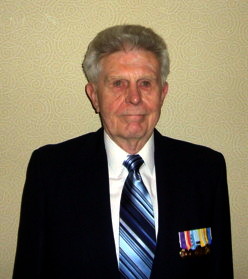
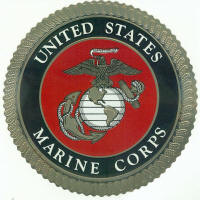 Following is my memory of events during the
time that I served with Dog Company, 7th Marines, 1st Marine Division in Korea December 1950 through November
1951.
Following is my memory of events during the
time that I served with Dog Company, 7th Marines, 1st Marine Division in Korea December 1950 through November
1951.